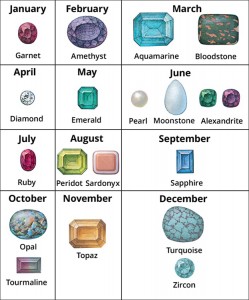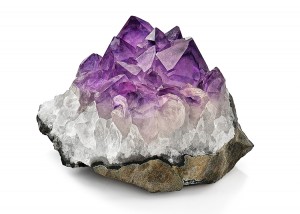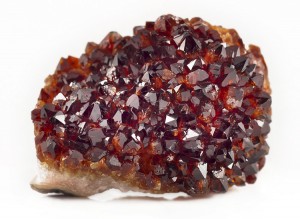February’s Amethyst
Friday, February 8th, 2019February 8, 2019
If your birthday is in February, your birthstone—the gem associated with the month of your birth—is the amethyst. Amethyst is a purple or bluish-violet gem. It is used to make rings, necklaces, brooches, and other jewelry. Amethyst is a variety of quartz. The purple color of amethyst is believed to be caused by impurities such as iron and manganese. Amethyst has been a prized gem since the days of ancient Egypt, and today it can be found among the British royal family’s crown jewels.
Amethyst is the birthstone for Pisces (February 19-March 20), a sign of the zodiac. It is also a traditional gem for the 6th and 17th wedding anniversaries. In the past, some people believed amethyst possessed magical powers. According to legend, wearing an amethyst could increase your intelligence or rid your mind of evil thoughts. The wine-colored gem could even prevent a person from becoming drunk (on too much wine, of course). Amethyst most often appears as crystals lining cavities in volcanic rock. It can be found in several places around the world, but the major sources for amethyst are Brazil and Uruguay in South America.

Click to view larger image
Birthstones, according to tradition, bring good luck when worn by a person born in the associated month. Credit: WORLD BOOK illustrations by Paul D. Turnbaugh
According to tradition, a birthstone brings good luck to a person born in its month. Each birthstone also corresponds to a sign of the zodiac. The belief in birthstones may have come from a Bible story about Aaron, the first high priest of the Israelites. The story describes Aaron’s breastplate, which was decorated with 12 precious stones. Early writers linked these stones with the 12 months of the year and the 12 signs of the zodiac. The custom of wearing a stone that represented a person’s zodiac sign probably originated in Germany or Poland in the 1700′s.




